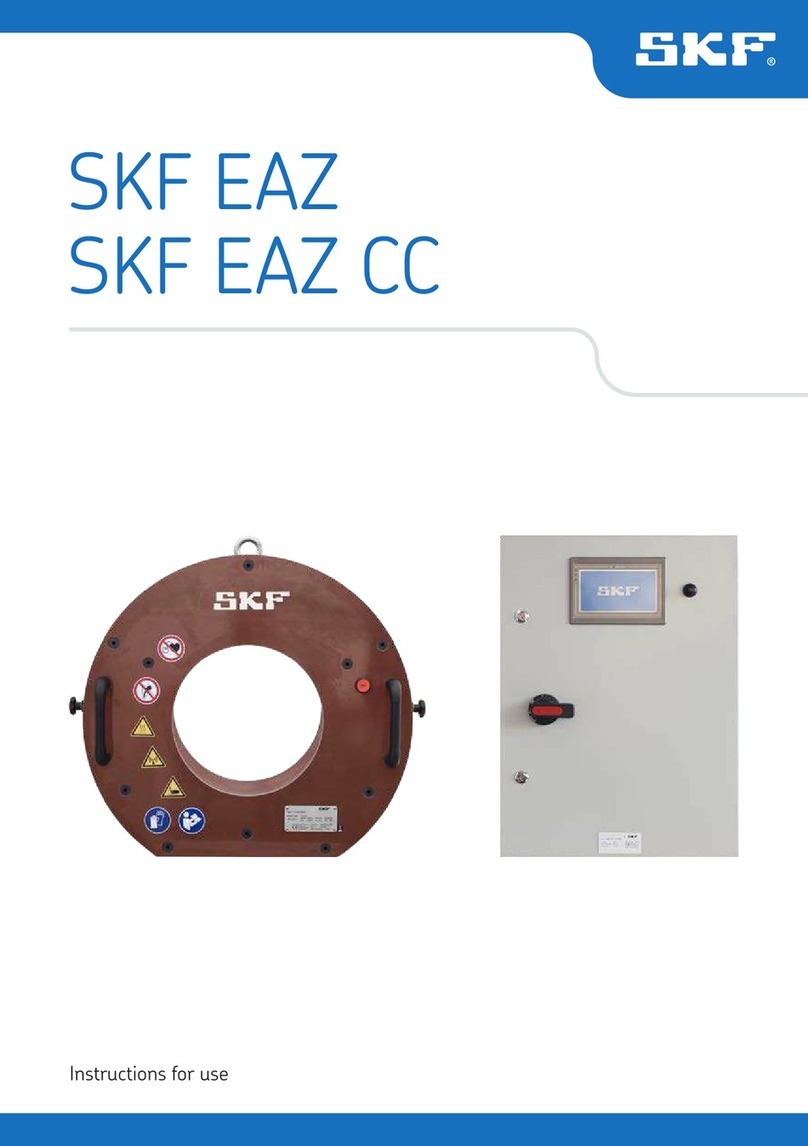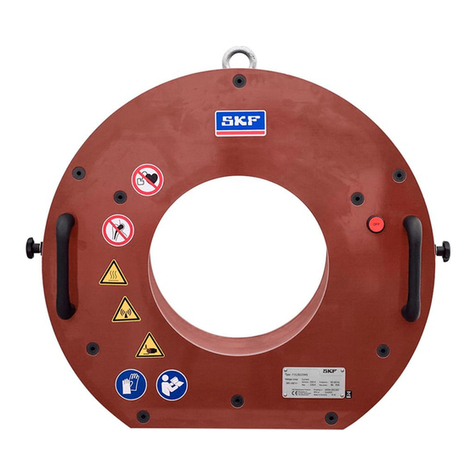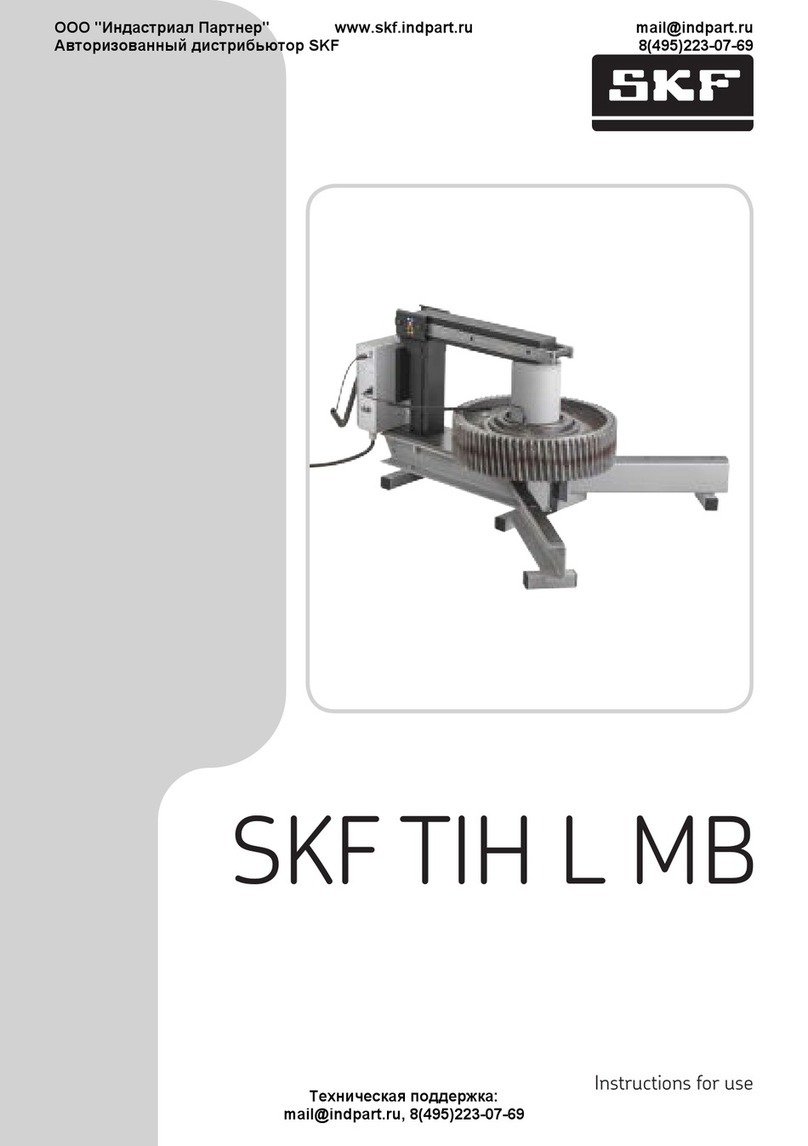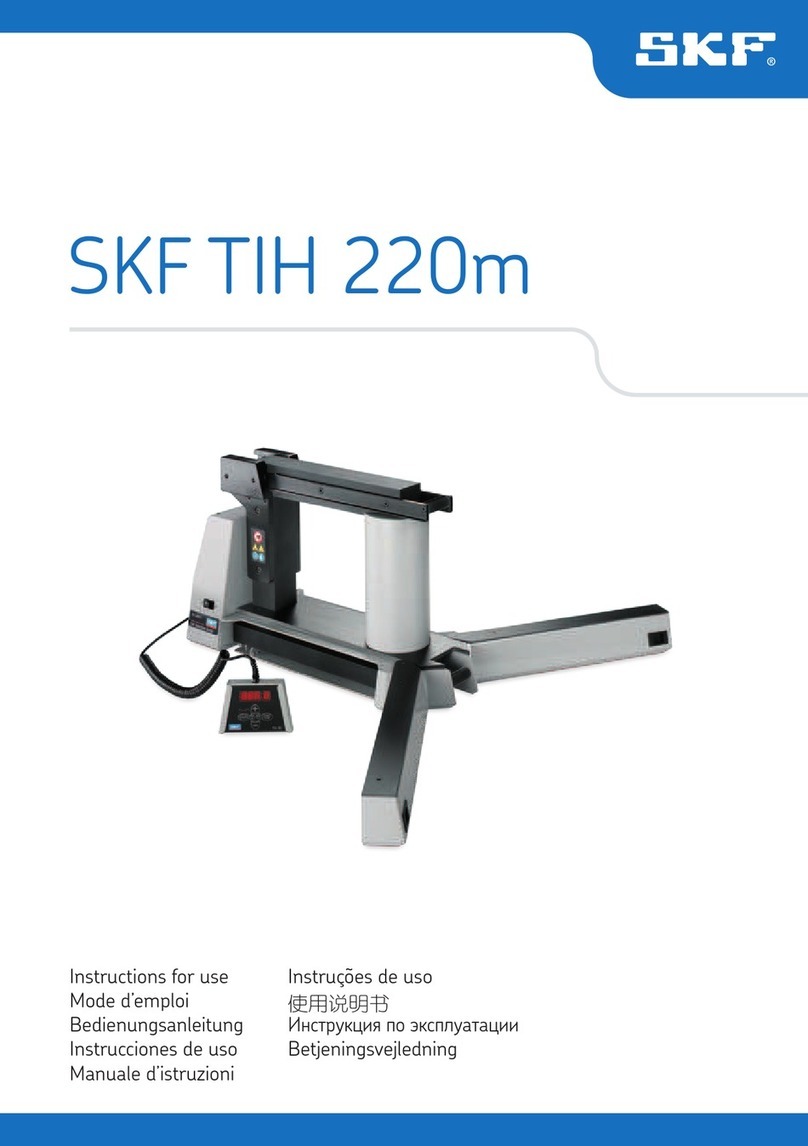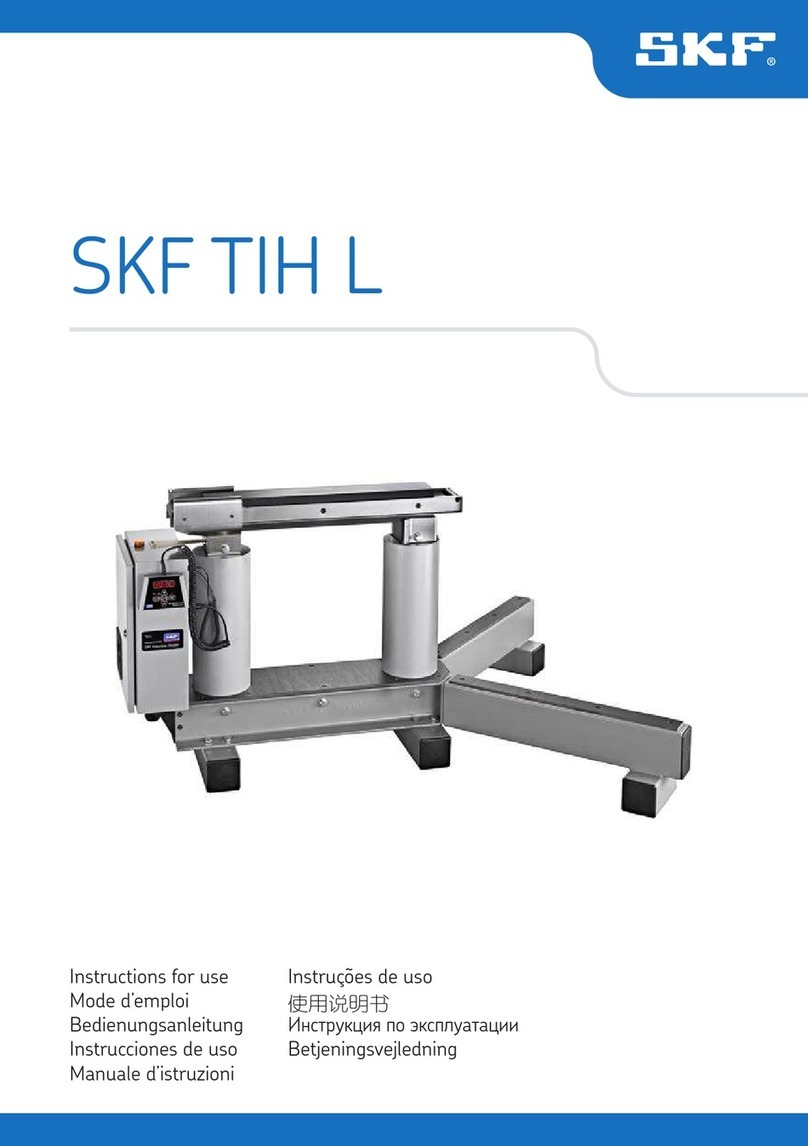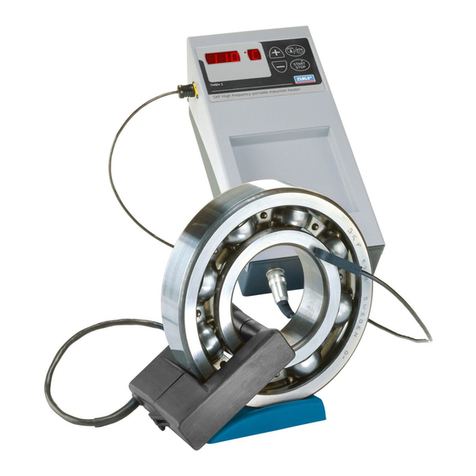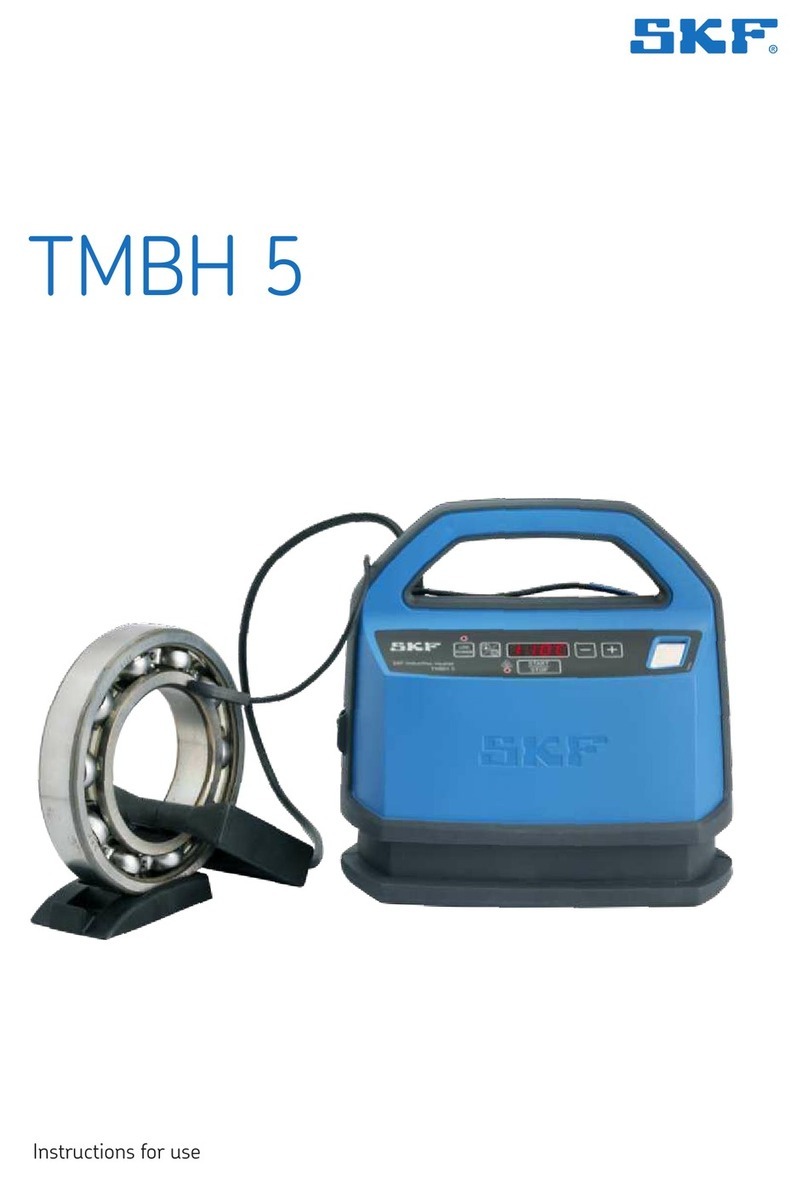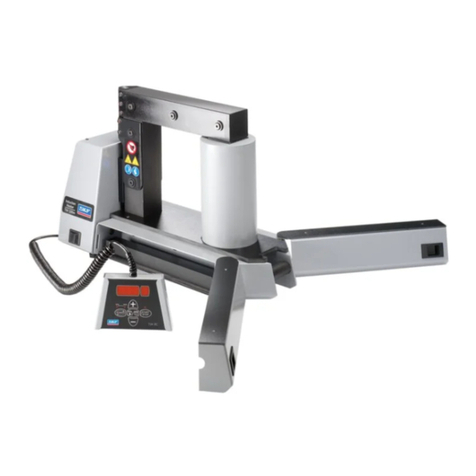
8 EN
6. Operation
6.1 User interface
Fig. 2 – User interface
From left to right:
• The LOW POWER button and LED.
This button reduces the power of the heater by
half of what it would normally take.
If low power mode is selected, then the red LED
is switched on.
• The temperature/time symbols button is the
MODE button. This button shifts in between
Temperature Mode and Time Mode.
• LED display. The process information is
displayed here: goal temperature, actual
temperature, error codes, time, etc.
• MINUS and PLUS buttons. These buttons
decrease or increase the value shown on the
LED display.
• START/STOP button and heating LED.
Press to start or stop the heater. The LED
button is permanently ON when the heater is
heating.
6.2 Temperature mode
In this mode components can be heated to a given
temperature.
• If the LED screen shows °C or °F,
Temperature Mode is selected.
• The selected temperature is shown on the
display. The default temperature for bearings
is 110 °C (230 °F). If a different temperature is
desired, press + or – to adjust the temperature
in steps of 1˚. Keep the + or – buttons pressed
for a faster adjustment.
• It may be desirable to heat up bearings or other
components to temperatures above 110 °C
(230 °F) for an increased mounting time or
a tighter interference fit. Consult the bearing
specifications to determine the maximum
permitted temperature. Always ensure that
the bearing does not lock due to an excessive
expansion of the inner ring compared to the
outer ring.
• Make sure that the temperature probe is
mounted on the bearing inner ring flange.
• Press START/STOP to start the heater.
The heating LED will switch on. Even if you
cannot hear it, the component is being heated.
• The user interface displays the temperature
detected by the temperature probe.
• Temperature differences in between top
and bottom might occur. This is due to the
higher influence of the inductive coils on the
bottom part of the component. This effect is
automatically adjusted in the last stages of the
heating.
• During heating, when pressing the MODE
button, the heating time is shown.
• When the selected temperature has been
reached, the bearing is then ready to be taken.
An acoustic signal will be generated for
4 seconds.
• If the component is not removed nor the
process stopped, the temperature holding
feature will maintain the component at
temperature for 10 minutes.
• By removing the temperature probe or
the workpiece, the heating process will
automatically stop. It can also be stopped by
pressing the START/STOP button.
• Remove the workpiece with proper handling
equipment. Do not slide the hot component
over the user interface surface as this will
damage the heater.
• The heater is now ready to heat up another
workpiece with the same settings.


















